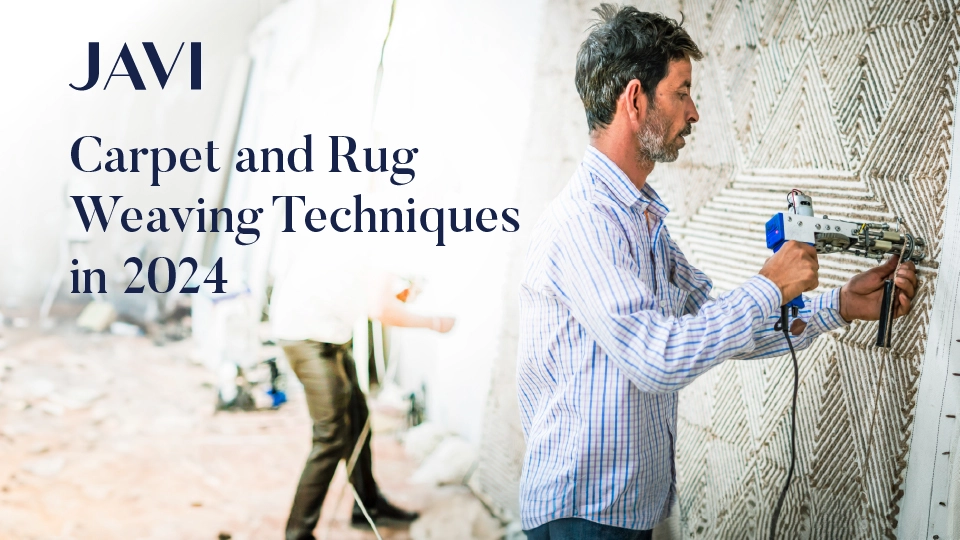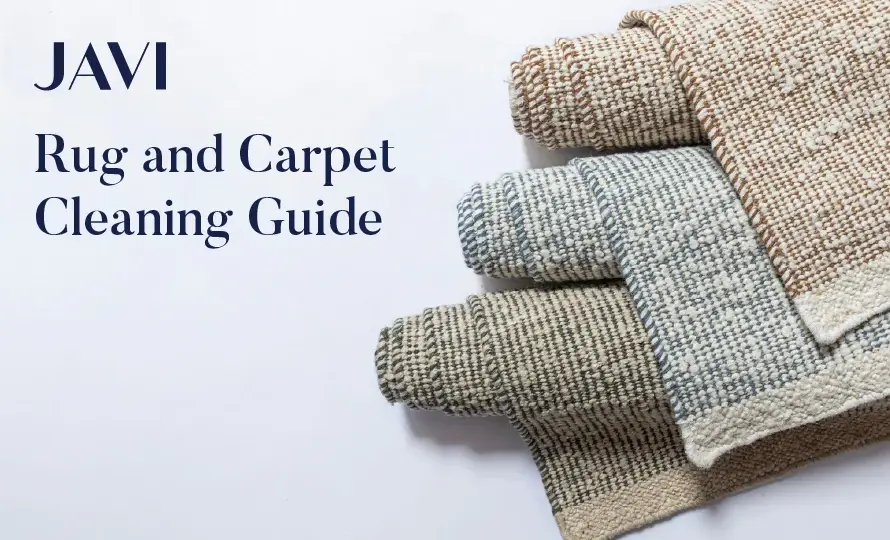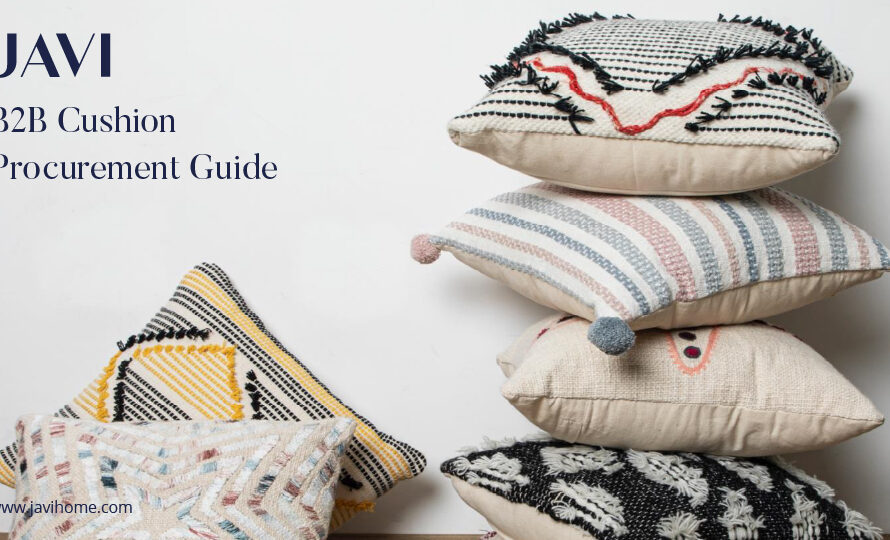The art of carpet and rug weaving has evolved significantly over centuries, blending traditional techniques with modern innovations. As we move into 2024, leading manufacturers continue to push the boundaries of design, craftsmanship, and sustainability. In this blog, we explore the diverse techniques used by top rug manufacturer, focusing on both time-honored and cutting-edge methods. We also highlight the sustainable practices shaping the industry, the unique qualities of JAVI Home rugs, and the global trends influencing modern rug weaving.
Hand-Knotted Rugs: Timeless Artistry
The Technique
Hand-knotting is a labor-intensive and intricate process that has been perfected over centuries. Each rug is created by tying individual knots onto a warp thread, which is then weft together to create a durable and detailed design. This rug weaving technique allows for a high level of detail and creativity, making hand-knotted rugs some of the most sought-after pieces in the world.
The Process
- Design Planning: The process begins with a detailed design, often drawn on graph paper to guide the weavers.
- Selecting Materials: High-quality wool, silk, or cotton is chosen for the warp, weft, and pile.
- Weaving: Skilled artisans tie thousands of knots by hand, following the design pattern meticulously.
- Finishing: The rug is sheared to create an even pile, washed, and stretched to enhance its appearance and durability.
Benefits
- Durability: Hand-knotted rugs are incredibly durable and can last for generations.
- Artistic Value: Each rug is a unique piece of art, showcasing the weaver’s skill and creativity.
- Customization: Hand-knotted rugs can be customized in terms of design, color, and size to meet specific client needs.
Hand-Tufted Rugs: Creativity and Efficiency
The Technique
Hand-tufted rugs offer a balance between handcrafting and efficiency. Unlike hand-knotted rugs, the yarn is pushed through a pre-designed backing using a tufting gun. This rug weaving technique allows for quicker production while still maintaining a high level of craftsmanship.
The Process
- Design Transfer: The rug design is transferred onto a primary backing material.
- Tufting: Using a tufting gun, artisans push loops of yarn through the backing according to the design.
- Securing the Tufts: A layer of adhesive is applied to the back to secure the yarn loops.
- Finishing: A secondary backing is added for stability, and the rug is sheared and washed to create a uniform surface.
Benefits
- Efficiency: Hand-tufted rugs take less time to produce than hand-knotted rugs, making them more affordable.
- Versatility: They can be made in a variety of designs and colors, suitable for different decor styles.
- Quality: Despite the quicker production process, hand-tufted rugs maintain a high level of quality and durability.
Hand-Woven and Hand-Loom Rugs: Traditional Techniques
The Technique
Hand-woven and hand-loom rugs are created using traditional rug weaving methods that date back centuries. These techniques involve interlacing warp and weft threads on a loom to create flat woven or pile rugs.
The Process
- Loom Setup: The warp threads are set up on a loom, creating the foundation for the rug.
- Weaving: Artisans interlace the weft threads through the warp using a shuttle or by hand, building the rug row by row.
- Pattern Creation: Patterns are created through the arrangement of different colored weft threads.
- Finishing: The rug is removed from the loom, and any loose ends are secured and trimmed.
Benefits
- Authenticity: Hand-woven rugs have a distinct, authentic look that reflects traditional craftsmanship.
- Durability: These rugs are sturdy and can withstand heavy use, making them ideal for high-traffic areas.
- Artisanal Value: Each rug is a testament to the weaver’s skill and dedication to traditional techniques.
Innovative Rug Weaving Techniques:
Robo-Tufting
The Technique
Robo-tufting is a modern technique that combines traditional tufting methods with robotics. This rug weaving technique allows for precise control over the tufting process, increasing efficiency and consistency in our premium rug manufacturing process.
The Process
- Design Programming: The rug design is programmed into the robotic tufting machine.
- Automated Tufting: The robo-tufting arm follows the design pattern, pushing yarn through the backing material.
- Finishing: The same finishing processes as hand-tufted rugs are applied, including securing the tufts and adding a secondary backing.
Benefits
- Precision: Robo-tufting ensures consistent quality and precise execution of complex designs.
- Efficiency: The process is faster than manual tufting, reducing production time and costs.
- Scalability: Robo-tufting can easily scale to meet high demand without compromising quality.
Circular Knitting
The Technique
Circular knitting is an innovative method used to create rugs with a knitted texture. This rug weaving technique involves knitting yarn in a continuous circular motion, resulting in seamless and unique rug designs.
The Process
- Yarn Selection: High-quality yarn is selected based on the desired texture and durability.
- Circular Knitting Machine: The yarn is fed into a circular knitting machine, which creates the rug in a continuous loop.
- Finishing: The rug is finished by securing loose ends and adding any necessary backing for stability.
Benefits
- Unique Texture: Circular knitting creates a distinctive, knitted texture that sets these rugs apart.
- Seamless Design: The continuous knitting process eliminates seams, enhancing the rug’s durability and aesthetic.
- Innovation: This technique represents a fusion of traditional knitting with modern technology, offering new design possibilities.
Global Trends Influencing Our Techniques
Minimalism
Minimalist design continues to influence rug weaving, with a focus on clean lines, neutral colors, and simple patterns. This trend emphasizes quality over quantity, encouraging the creation of timeless, understated pieces.
Bold Patterns and Colors
Conversely, a growing demand for bold patterns and vibrant colors is emerging in rug weaving. This trend celebrates creativity and self-expression, leading to the creation of eye-catching, statement-making rugs.
Sustainability
As consumers become more environmentally conscious, there is a strong demand for sustainable products. This trend drives innovation in eco-friendly materials and production processes, encouraging manufacturers to adopt sustainable practices.
Technological Integration
Advancements in technology are influencing rug weaving techniques, with innovations such as robo-tufting and circular knitting gaining popularity. These technologies enhance efficiency, precision, and creativity, shaping the future of rug manufacturing.
Cultural Influences
Globalization has led to a blending of cultural influences in rug design. Traditional motifs and techniques from different cultures are incorporated into modern designs, creating unique and diverse pieces that reflect a global aesthetic.
The JAVI Home Difference: Quality and Craftsmanship
Commitment to Excellence
JAVI Home is renowned for its commitment to quality and craftsmanship. Each rug is crafted with meticulous attention to detail, ensuring that every piece meets the highest standards of excellence.
Skilled Artisans
JAVI Home employs skilled artisans who bring years of experience and expertise to the rug weaving process. These artisans are dedicated to preserving traditional techniques while embracing modern innovations.
Customization
JAVI Home offers extensive customization options, allowing clients to choose from a variety of designs, colors, and materials. This flexibility ensures that each rug is tailored to meet the specific needs and preferences of the client.
Sustainability
JAVI Home is committed to sustainable practices, using eco-friendly materials and processes to create beautiful, high-quality rugs. The company prioritizes environmental responsibility and ethical production, ensuring that its products are both luxurious and sustainable.
Conclusion
The landscape of carpet and rug weaving in 2024 is characterized by a blend of tradition and innovation. At JAVI Home, we utilize hand-knotted, hand-tufted, hand-woven, and innovative techniques like robo-tufting and circular knitting. Our focus on sustainability, quality, and craftsmanship sets us apart as a top manufacturer in India. Embracing global trends, we continue to create beautiful, durable, and sustainable rugs, meeting the diverse needs of consumers worldwide.


